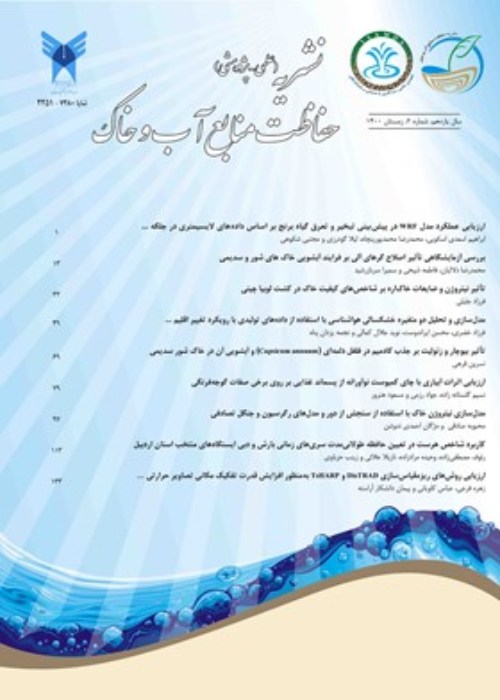Modeling Desalination of Brackish Water with the Electrodialysis Method, Using the Design of Experiments and the GMDH neural Network
Desalination of saline and brackish water as a relatively permanent resource is a reliable solution to compensate for water shortages. The Electrodialysis process, as one of the desalination methods, separates almost unsalted water from saline water and is becoming a solution for water scarcity all over the worldworldwide. Modeling methods allow provide the study of desalination of saline and brackish water by the Electro Dialysisdialysis, as well as predicting the behaviors and process patterns of these systems. The purpose of this study is to model the Electrodialysis process by Design of Experiments and to evaluateing the GMDH neural network method in estimating the separation percentage and the output flux of the brackish water Electrodialysis cell.
The volumetric flow values in six levels (1, 2.5, 5, 10, 15, and 20 mL min-1), solute concentration in three levels (200, 500, and 1000 mg L-1), temperature in three levels (50 , 60, and 70°C), voltage at three levels (10, 20, and 30 V) and pressure at three levels (200, 400, and 800 Pa) were extracted. In order to model the effect of each above inputs on the separation percentage and output flux of brackish water Electrodialysis cells, The full factorial design and the GMDH neural network were are used to model the effect of each above inputs on the separation percentage and output flux of brackish water Electrodialysis cells. In modeling the output of the Electrodialysis cell output using the GMDH neural network, after determining the input variables, randomization, normalization and segmentation of input and output variables were performeddone. For modeling, 90% of the data (437 samples) were randomly assigned for training and 10% of the data (49 samples) were are used for validation. On the other hand, due to having specific levels for each of the inputs, it was possible to use a Full Factorial experimental design.
The linear results of statistical regression analysis table results showeshowd that there is a significant difference between all simple and interaction effects of the treatments for the response variable of separation percentage and flux at the one percent level. With decreasing volume flow and solute concentration, and increasing temperature, voltage, and pressure, the separation percentage and output flux showed a significant increase. The results of modeling with the GMDH neural network showed demonstrates that in the training step, the prediction accuracy of separation percentage (R2=0.90, MBE=-0.16 and RMSE=7.48) and flux (R2=0.79, MBE =0.001 and RMSE=0.08). The These criteria same values in the testing step were are 0.85, -3, and 9.37 for separation percentage and 0.78, -0.008, and 0.07 for flux. Correlation of target and output data, proximity of target and output values to y = x diagram, low transgression of error values from zero value and proximity of error distribution (histogram) to normal distribution were obtained.
After determining the significant differences of all simple and interaction effects of treatments for response variables, the means were compared. It is ideal to Hhaveing more separation percentage and output flux response variables was ideal. Therefore, the results of comparing the means showed illustrate that the best volumetric flow level equal to 1 ml / min, input flow concentration of 200 mg / l, temperature of 70 ° C, input voltage of 30 volts and pressure of 800 Pascals, lead to the highest separation percentage and output flux. In addition, with decreasing volumetric flow, and decreasing solute concentration, and increasing temperature, increasing voltage and increasing pressure, separation percentage and output flux showed a significant increaserise. Also, according to the statistical indicators for the whole data, appropriate correlation, slightly underestimation, and small error were are obtained. ThereforeThus, using the Design of Experiments and GMDH neural network has suitable accuracy for modeling desalination of brackish water using the Electrodialysis process.
- حق عضویت دریافتی صرف حمایت از نشریات عضو و نگهداری، تکمیل و توسعه مگیران میشود.
- پرداخت حق اشتراک و دانلود مقالات اجازه بازنشر آن در سایر رسانههای چاپی و دیجیتال را به کاربر نمیدهد.


